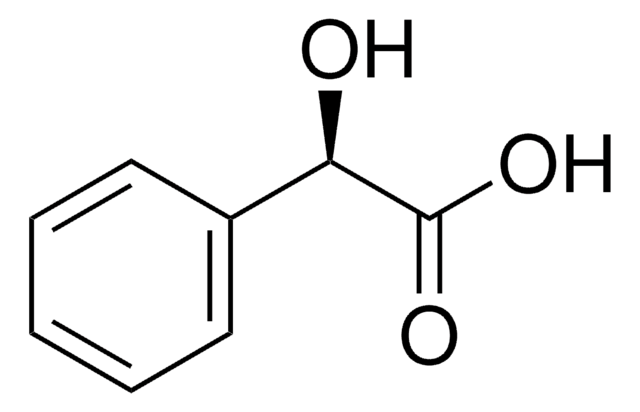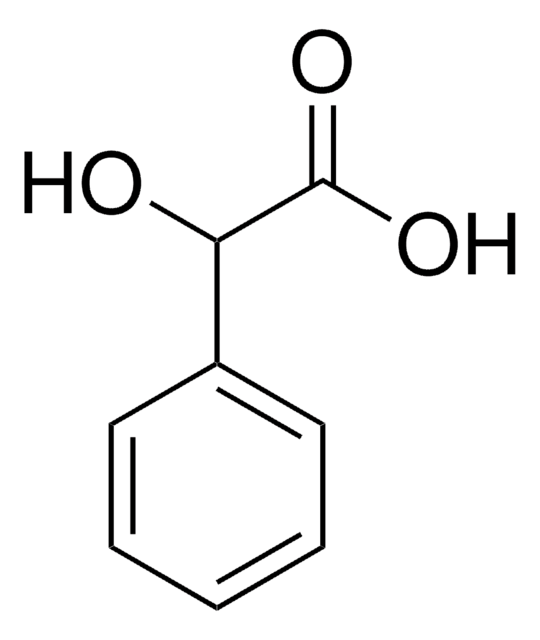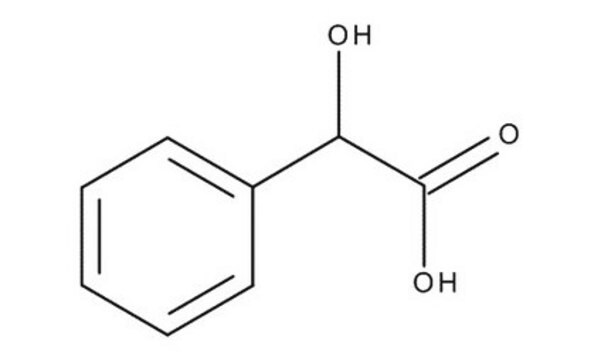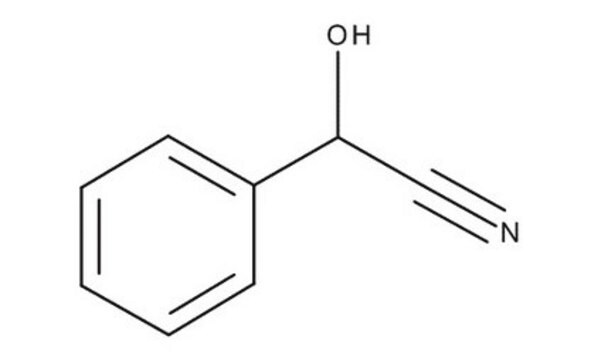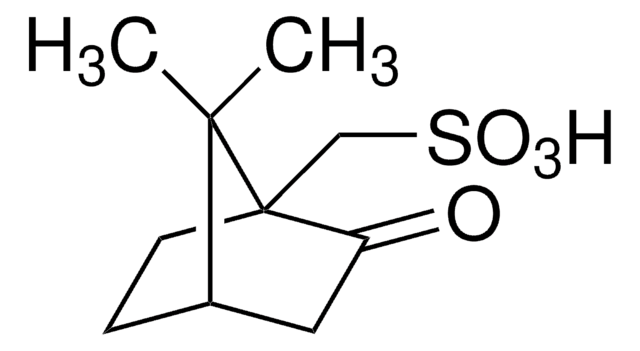778052
(S)-(+)-Mandelic acid
ReagentPlus®, ≥99%
Synonym(s):
(S)-α-Hydroxyphenylacetic acid
About This Item
Recommended Products
product line
ReagentPlus®
Assay
≥99%
form
crystals
mp
131-134 °C (lit.)
132-138 °C
SMILES string
O[C@H](C(O)=O)c1ccccc1
InChI
1S/C8H8O3/c9-7(8(10)11)6-4-2-1-3-5-6/h1-5,7,9H,(H,10,11)/t7-/m0/s1
InChI key
IWYDHOAUDWTVEP-ZETCQYMHSA-N
Looking for similar products? Visit Product Comparison Guide
Related Categories
Application
Legal Information
Signal Word
Danger
Hazard Statements
Precautionary Statements
Hazard Classifications
Eye Dam. 1
Storage Class Code
11 - Combustible Solids
WGK
WGK 3
Flash Point(F)
>374.0 °F
Flash Point(C)
> 190 °C
Certificates of Analysis (COA)
Search for Certificates of Analysis (COA) by entering the products Lot/Batch Number. Lot and Batch Numbers can be found on a product’s label following the words ‘Lot’ or ‘Batch’.
Already Own This Product?
Find documentation for the products that you have recently purchased in the Document Library.
Our team of scientists has experience in all areas of research including Life Science, Material Science, Chemical Synthesis, Chromatography, Analytical and many others.
Contact Technical Service